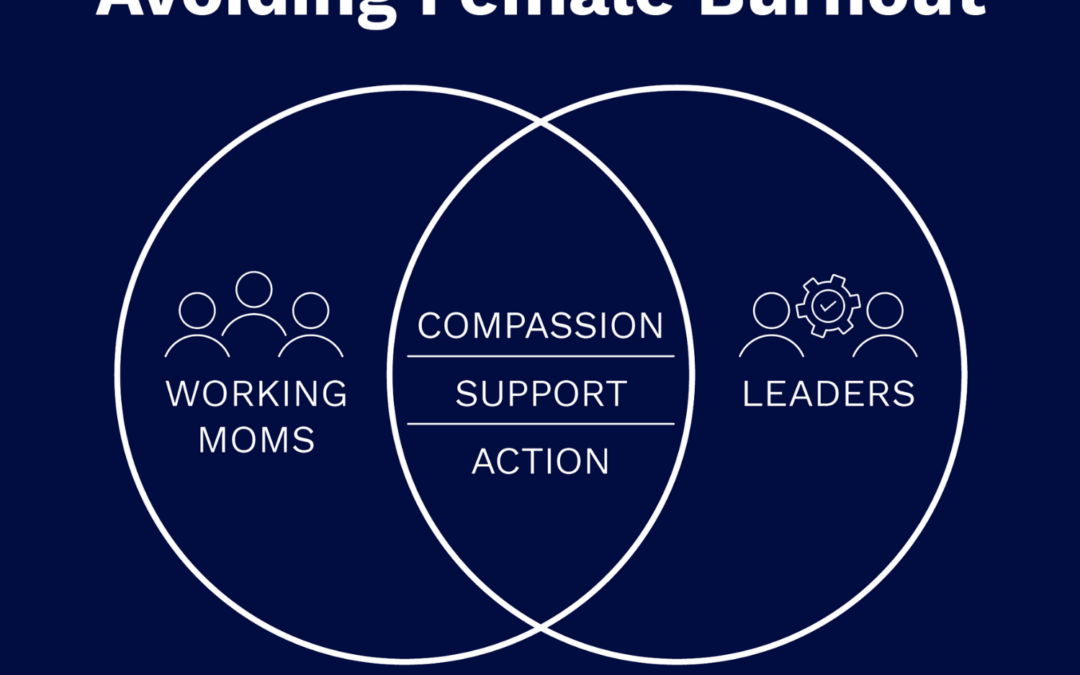By Carolyn Dolezal, CEO, C200.
Working parents juggling the demands of their jobs and families is nothing new, but the pandemic presented a unique challenge of trying to find a balance between personal and professional responsibilities within the home. With the holiday season and the rise of the Delta variant, the possibility of remote learning and hybrid classrooms are on everyone’s minds again. For some working parents, these unknown situations are difficult to prepare for, and it’s especially taking a toll on working moms.
Together with the Angus Reid Group, C200 and Eileen Campbell, a member of C200’s Board of Directors, commissioned a survey of 1,000 American adults. The survey found women are twice as likely as their significant others to take time off or even drop out of the workforce completely to deal with the working parent problems we’re seeing today. The sudden increase in women leaving their jobs to take on family responsibilities could have a detrimental impact on equality in the workforce for decades. To avoid this, we can take a two-sided approach to support working moms from both the leadership and employee perspective. When both leaders and their employees approach this year with that compassion in mind, we can come together to find ways to effectively support working moms and avoid burnout.
Be compassionate with yourself and with your team.
Working Moms Whether you have school-age children or not, we know how hard it is to balance work and family. C200 member and President of VSP Vision Care, Kate Renwick-Espinosa, said, “Personally, I remember how tough it was for me, years ago, to be working while my kids were young. And I didn’t even have to manage virtual learning as so many working moms have during the pandemic.”
Every employee is going to be different. No matter what your situation is, it’s okay to be compassionate with yourself as you figure out what works best for you.
Take time to think about what that support looks like and what you need. Our survey showed that women want more choices for support than they’ve had in the past, whether it’s additional paid sick leave, flexible start times or financial support for family care. Realizing and expressing your needs can help your leaders make better decisions for you as an employee.
Leaders Whether you’re the executive making the decisions or a manager in charge of a small team, leading with compassion will make a difference for working moms. Everyone’s situation will be different this year, so leaders must make sure they listen with empathy when a team member shares their needs or advocates for the needs of others. Kate said, in her role at VSP Vision Care, she’s taken the approach of trying to welcome kids in the background and the noises of pets or people at home as part of the new work-from-home life.
We’ve seen that leading with compassion not only helps your employee’s overall wellbeing but can also help with employee retention and productivity. According to this Forbes article, a recent study showed that 54% of women who had highly empathic leaders experienced less COVID-related burnout. If we can all approach this year with a little more compassion, leaders can ensure we’re not leaving women behind in the workforce.
Take actionable steps to effectively support working moms.
Working Moms Once you are given the space to determine if you need extra help, you need to feel empowered to ask for that support. “If you don’t communicate what you need, you won’t get the support you need and deserve,” Kate said. If your employer offers a flexible work schedule, determine what that looks like for you and ask for what you need to make it possible. Finding a work-life balance shouldn’t mean you say goodbye to work-free evenings and weekends, but rather that you have the support you need to do your best work no matter where or how you’re doing it. Take the initiative to ask for resources, whether it’s to work from home or childcare support, so leaders can take actionable steps to provide it.
Leaders Determining what the support for working moms looks like and how it will function within your company or team comes from the leaders. Develop mechanisms to gather direct feedback from employees about opportunities for improvement, specifically around family support needs and then act based on that feedback. Recently, VSP Vision Care began offering new employee benefits to help manage family care. “One program we added, for example, helps working parents find local caregivers, tutors and more,” Kate said.
We can all benefit by transitioning from measuring an employee’s worth by the time they spend in the office and instead, measure it by the results they produce. That way, we can meet working moms where they are, without leaving them out of important meetings or off important projects. Taking these actionable steps ensures that working moms are not only being heard but what they need is being valued.
How do we adjust?
Our survey of 1,000 American adults showed the future of work is not just about being flexible, it’s about looking at benefits differently, leading with compassion and offering the resources women need. This includes adjusting regularly. We can’t get comfortable with making a change to benefits or offering support only once a year because the world is changing faster than that − as we’ve seen throughout the pandemic. Instead, we need to frequently give and receive constructive feedback to create a place where working moms feel valued. These steps not only help working moms, but all employees with or without children.
We are at a key inflection point in making sure women don’t get left behind in the workforce. Not only can employees stand up for what they need, but leaders can offer support to ensure working moms stay in the workforce. We can make sure they are given the same opportunities as men to climb the corporate ladder despite the uncertainty of this year.


